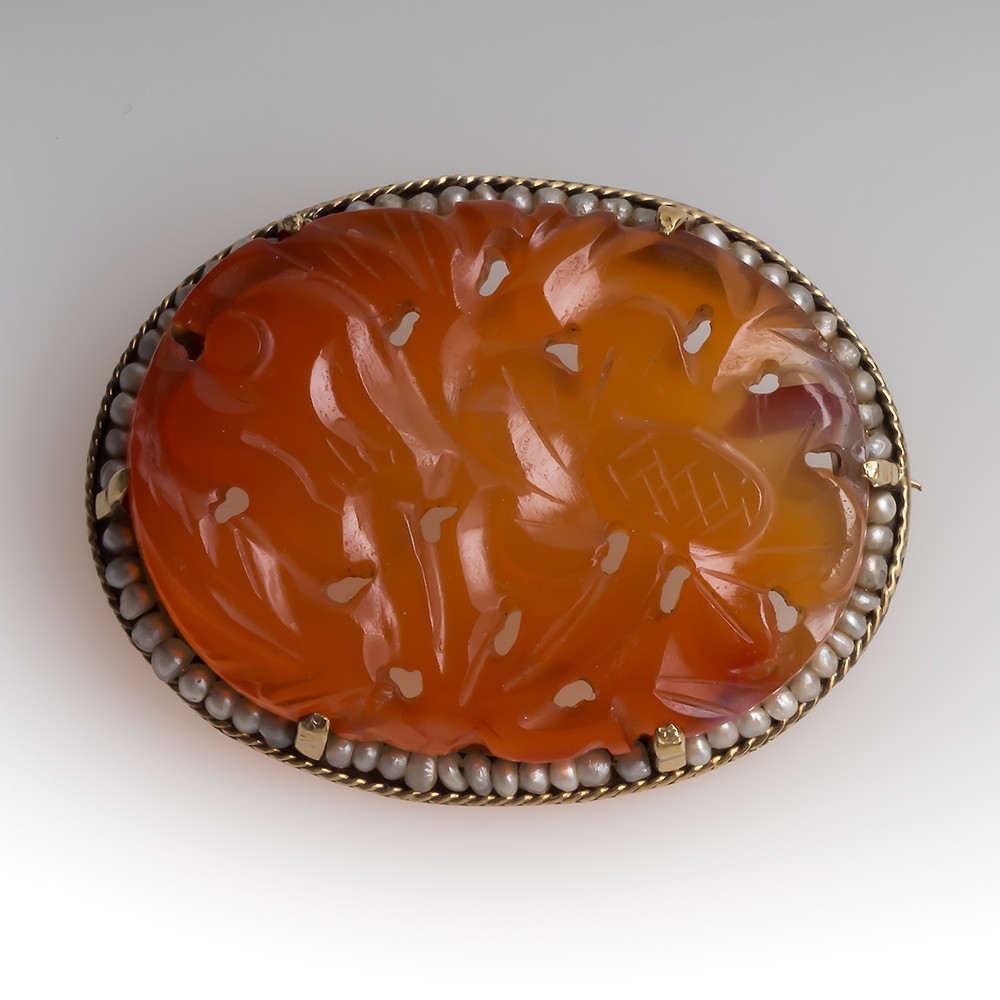Posted in: Auctions/Results
 Carved gemstones is the focus of Christie's 'Masterpieces in Miniature.' This vintage carved carnelian & seed pearl brooch is a fine example of carved gemstones. Click here for more details. Photo ©2019 EraGem Jewelry.
Christie's upcoming 'Masterpieces in Miniature' auction features 40 exquisite engraved gems and cameos. All the lots in this sale hail from the much larger collection of Giorgio Sangiorgi (1886-1965). These antique gems go on sale tomorrow, April 29th, at Christie's New York.
Carved gemstones is the focus of Christie's 'Masterpieces in Miniature.' This vintage carved carnelian & seed pearl brooch is a fine example of carved gemstones. Click here for more details. Photo ©2019 EraGem Jewelry.
Christie's upcoming 'Masterpieces in Miniature' auction features 40 exquisite engraved gems and cameos. All the lots in this sale hail from the much larger collection of Giorgio Sangiorgi (1886-1965). These antique gems go on sale tomorrow, April 29th, at Christie's New York.
Giorgio Sangiorgi's Collection
Based in Rome, Giorgio Sangiorgi made his living as an art dealer. In the process of collecting for others, Sangiorgi also amassed an important collection of his own. Following in his father's footsteps, Sangiorgi presented primarily European works of art at the family shop, Galleria Sangiorgi. Located in the Palazzo Borghese, the gallery featured commercial art, as well as auctions and special art exhibitions. For himself, Sangiorgi collected ancient glass and engraved gems. His collection includes gems dating as far back as the Italian Renaissance. In the process of collecting, Sangiorgi became an expert. He penned several scholarly articles on the topics of antique glass and engraved gems. He collected throughout his lifetime, into the mid-twentieth century. Though he began his collection in Rome, he moved it to Switzerland in the 1930s as a precaution against the ravages of war.Christie's Bernheimer Offers a History of Gem Engraving
In addition to serving as the International Head of Antiquities at Christie's, G. Max Bernheimer lends his own expertise to the Masterpieces in Miniature auction. Bernheimer is a recognized specialist in the field of engraved gems. His passion dates back to his college years, during which time he wrote his thesis on the topic. His expertise in the field has only grown with hands on opportunities through his work at Christie's. In the sales catalog, as well as in a special publication available on Christie's website, Bernheimer offers details on the history and importance of gem engraving. According to Bernheimer, the art of engraving dates back to ancient times, beginning with two styles - intaglio and cameo. While cameo focuses on the removal of material to raise a design in relief, intaglio embeds the image with deep cuts into the surface of the stone. According to Bernheimer, the gems most commonly carved include carnelian, jasper, chalcedony, amethyst, rock crystal, sapphire, and garnet. Once carved, jewelers set the gems into gold, silver, or bronze mountings. Most often, kings, leaders, and merchants wore these "seals" on their fingers as rings, or around their necks as pendants. Invented before pen-and-ink, engraved gemstones served the same purpose as a signature today - to make agreements and authorize contracts. Thus, seals were guarded carefully against theft and misuse. The history of engraved gems dates as far back as 5,000 years ago, in ancient Mesopotamia. As you will see in Christie's sale catalog, mythological figures, portraits, and animals remained common motifs throughout the millennia. I invite you to peruse the catalog by using the link in the paragraph above. This sale provides an important opportunity for collectors to add engraved gems of rare provenance to their collections.5 years ago
3 view(s) 